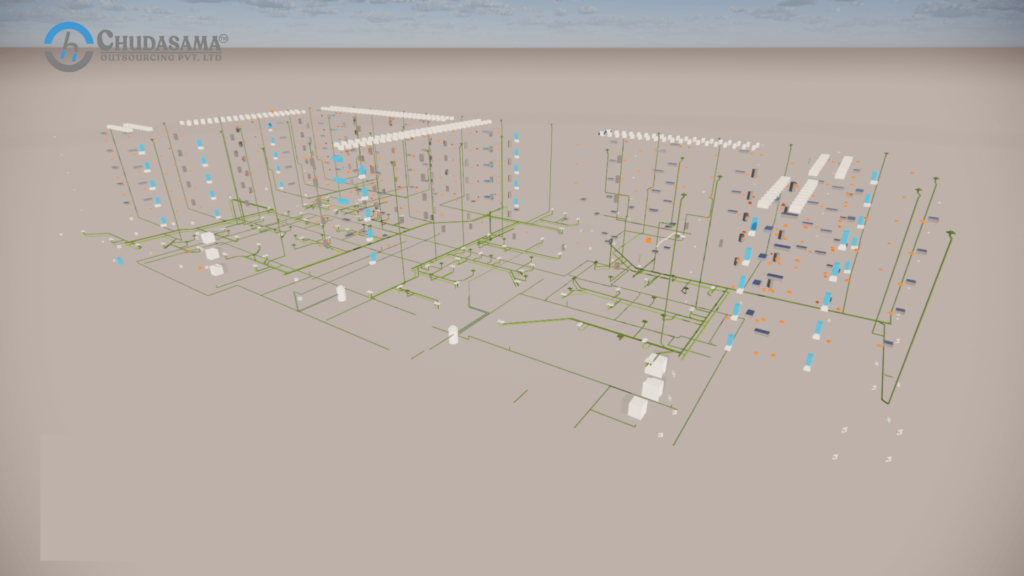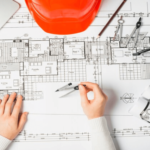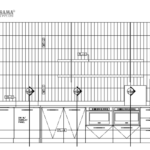Quick Summary: Get to know about a comprehensive guide to MEP in Construction for 2024. Learn about the specifications of MEP and how it benefits the architecture industry. Additionally, understand the range of services offered and how it help architecture industries.
In the construction industry, it is survived through construction, efficiency, and precision. It is not only dependent on the quality of design given by the architect but also on the quality of living that happens in the space. One of the important aspects of the building that ensures a good quality of living is MEP – Mechanical, Electrical, and Plumbing systems.
This comprehensive guide for 2024 will walk through the specifications of MEP, its benefits, and its role in the modern construction industry.
What is MEP in Construction?
MEP is an acronym that is generally use by contractors, consultants, and designers to cover all the logistic purposes of the building. Elaborated as Mechanical, Electrical, and Plumbing these systems are required to make the building functional and habitable.
These systems are crucial in all types of building forms, from weekend houses to large commercial buildings. Under this umbrella, it also involves a wide range of components like HVAC (Heating, Ventilation, and Air Conditioning), plumbing and lighting fixtures, and fire safety protocols. These are subcategories that are involve in building performance as they act as the nervous system of any building.
What Does MEP in Construction Involve?
As the systems of MEP are the backbone of any construction project, each letter in this word brings in a lot of subcategories to ensure functionality, comfort, and safety.
Mechanical Systems largely deal with heating, ventilation, and air conditioning of the space. It makes sure that the systems incorporated regulate indoor air quality, temperature, and humidity levels for a comfortable environment for occupants.
These HVAC (heating, ventilation, and air conditioning) systems have an important role in maintaining optimal conditions within the building just as manufacturing and data operations. All of this also falls into elevators, escalators, and mechanical equipment for building functionality.
The Electrical Systems in the building have the involvement of design, installation, and maintenance of wiring, power distribution, and electrical equipment in a building. All the ceiling lights, electrical points, organization of electrical appliances, management of machinery, and other electrical devices are take into consideration.
This calculation ensures sufficient power supply and management of these devices. Hence, the role of these electrical systems is to ensure reliable systems and safety along with the building codes.
Plumbing systems take care of the water supply. Drainage, water management, and sewage systems in the buildings. This is an important part of the building services as it ensures users have access to clean drinking water efficient water management, and improved rainwater systems using pipes and channels.
These plumbing systems also account for toilets, sinks, showers, and irrigation systems of private properties. Managing plumbing systems also involves planning for fixtures such as toilets, showers, sinks, and irrigation systems using components including pipes, valves, and water heaters.
The mechanical, electrical, and plumbing (MEP) systems of a building are essential to ensure their efficiency and effectiveness. Includes climate control, lighting, fire protection, and plumbing systems. MEP systems are important because they provide occupants with comfort and convenience while requiring minimal maintenance. Without the MEP program, the building would lack infrastructure.
Therefore, the MEP program is an integral part of the building plan in order to achieve effective results that meet needs and expectations. The proper use of MEP systems improves the building’s long-term performance.
What Are the Benefits of MEP in Construction?
Aside from providing occupant comfort, the role of MEP and its use in the construction industry can provide a wide range of benefits for building owners and designers:
Energy efficiency:
Owners can cut energy consumption in the long run if MEP usage is considered along with proper design planning and networking. This, in turn, helps in reducing infrastructure costs and reducing the environmental footprint.
Improved Comfort:
Thanks to the efficient and well-designed HVAC system, the building is responsive to the ambient temperature and provides a comfortable environment with easy access to water and sanitation facilities.
Safety measures:
Since MEP also includes building standards and standards for implementation, it ensures that users check wiring, fire safety, and hazard prevention
Air Quality Improvement:
Properly installed HVAC ventilation systems also help improve ventilation and improve air quality.
What Are the Top Services Provided in MEP Construction?
As mentioned earlier, there are several stages in the construction process that apply to MEP projects.
HVAC design and installation:
This is considered once the civil work of the building is complete, and decisions on air conditioning should made based on the size of the building and the needs of the users
Electrical and lighting:
Design and install fixtures, power lines, and power distribution systems using solar panels or other means to ensure continuous access when needed.
Fire safety:
Specific building regulations for building types are consider, including the installation of alarms, emergency exits, and safety hazards
Plumbing System:
Installation of drains and plumbing systems, and provision of fresh water to ensure proper disposal of wastewater.
Why Select Chudasama Outsourcing for Your Construction Project’s MEP Needs
Chudasama Outsourcing, a leading MEP BIM modeling expert, is different from all other MEP BIM Service providers in providing Mechanical, Electrical, and Plumbing services for your construction project. Our knowledge and high standard of delivering services are what make us different from others.
We provide a Revit MEP Expert BIM Modelers crew of specialists, armed with the most recent technology and knowledge, such that all the MEP necessities of your project will taken care of with much precision and proficiency.
At length of work, we know the difficulties and complexities of MEP construction and BIM modeling and our ultimate goal is to come up with innovative and economical solutions in this field. Reliability on Chudasama Outsourcing when it deals with Outsourcing MEP BIM Services means the performance of a partner who is totally committed to and success of the project.
Conclusion
The MEP systems are the foundation for all the building operations. When it is not present, the structure is useless. It contributes to ensuring the building’s comfort, safety, and functionality. Hence, in order to guarantee the project’s success and longevity, it is crucial to incorporate MEP considerations in the design phase.




